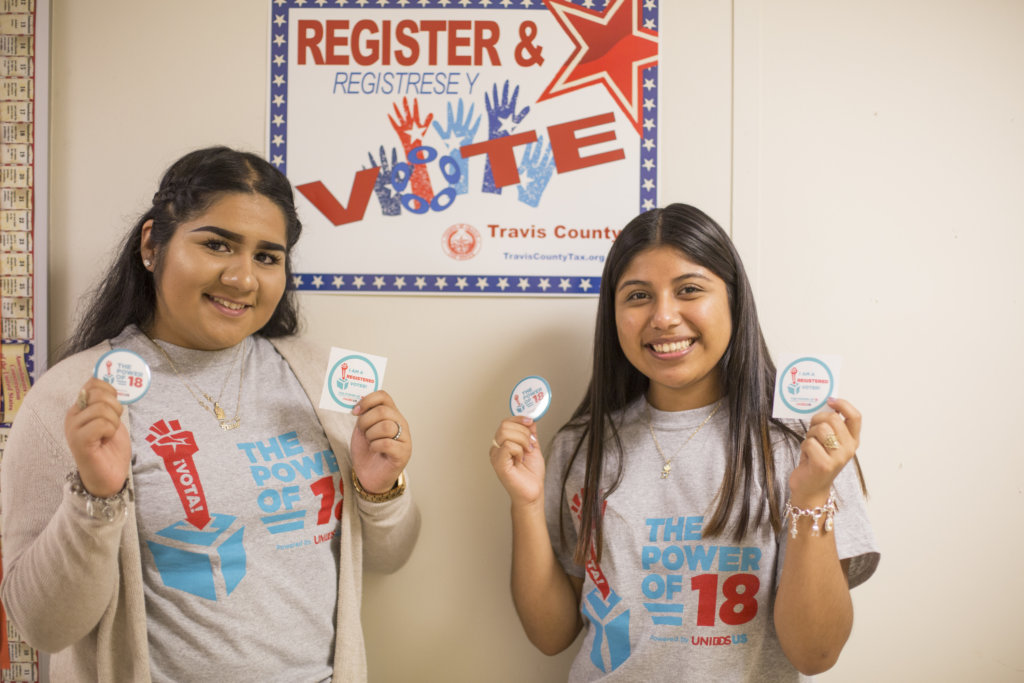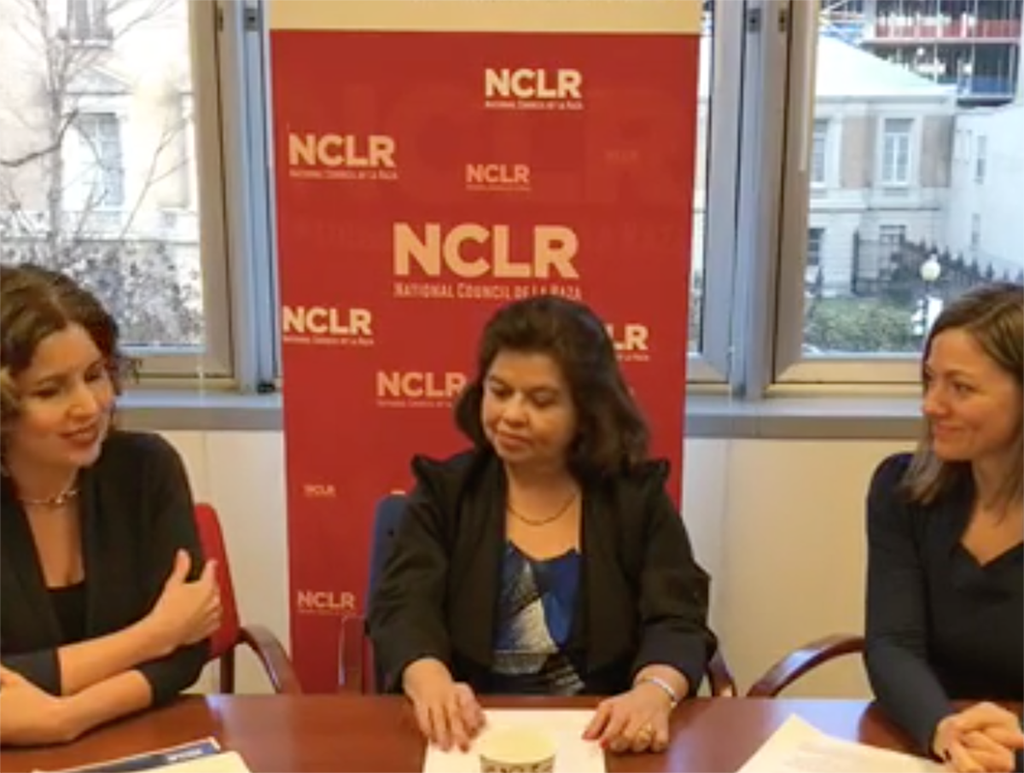Headspace: Latino Students Have Plenty of Reasons to Be Stressed Out. Here Are Some Steps for Identifying and Treating Anxiety and Depression.

Growing up Latino in America is hard. A 2016 UnidosUS report showed that Latino youth experience disproportionately higher levels of anxiety and depression than their non-Hispanic peers, thanks in large part to poverty, unsafe or unstable living conditions, and racial discrimination.
In the last two years, life for Latino youth has gotten even harder. They’ve witnessed U.S. immigration authorities tearing crying children from their anguished parents during this summer’s migrant separations at the U.S.-Mexico border; law enforcement profiling young Latinos—especially males—as predators and criminals; and President Donald J. Trump throwing paper towels to residents of Puerto Rico after the island’s elected officials complained that the federal government’s response to devastation from Hurricane María was slow and inadequate.
Keep up with the latest from UnidosUS
Sign up for the weekly UnidosUS Action Network newsletter delivered every Thursday.
“In the aftermath of the 2016 election, existing risk factors intensified, as young Latinos were exposed to profound hostility, bullying, and overt xenophobia in schools and other social spaces,” says Patricia Foxen, UnidosUS’s deputy director of research and the author of the 2016 publication Mental Health Services for Latino Youth: Bridging Culture and Evidence.
“Not surprisingly, these types of social aggressions contribute to increased distress for Latino students, which can lead to diminished school performance and attendance, not to mention higher drop-out rates, particularly for students who do not have strong support systems,” says Foxen.
So how can Latino students manage their emotional well-being in these challenging times? UnidosUS consulted with Foxen and several other Latino community health experts to find out.
FIND A TRUSTWORTHY ADULT
“Generally speaking youth are encouraged to speak with trusted adults such as parents, other family members, teachers, guidance counselors, clergy, coaches, or neighbor’s family. A trusted adult will at least be able to take charge, which is better than children trying to deal with it on their own,” says Dr. Debra Wentz, president and CEO of the New Jersey Association of Mental Health and Addiction Agencies, which has piloted a number of Hispanic mental health programs across the country through its National Resource Center for Hispanic Mental Health.
Most public schools come equipped with counselors, nurses, even social workers, and, to some degree, teachers are all trained to identify and respond to heightened levels of anxiety, depression, and mood swings. Commonly known as mental health first aid, this first phase of mental health intervention could start with a quick chat to calm a child’s nerves and assess whether more intervention is needed. If a child is showing extreme changes in mood or behavior, then the child might be referred to more intensive, ongoing therapy or even medication.

KNOW THE SIGNS AND THE CULTURE
“It’s important to not assume that anxiety, depression, and mood swings are normal, so while these symptoms do not automatically mean an individual has a mental health disorder, they might be having a normal reaction to an abnormal situation, they shouldn’t be dismissed or attributed to typical children’s or teenager’s behavior,” says Wentz noting the symptoms could be everything from insomnia or excessive sleep, headaches, and stomach aches to impaired concentration, frequent emotional outbursts, and thoughts of suicide or death. “It’s the frequency and or length of time that those symptoms are evident and they significantly interfere with the individual’s life.”
Already in 2016, Latino youth had the highest rates of depressive and suicidal symptoms of any ethnic group in the United States. According to the data bank Child Trends, 35% of Hispanic adolescents reported feeling sad or hopeless for extended periods of time, compared to 29% of White and 25% of Black youth. Foxen’s report noted these rates were especially alarming among Latina teens. Data from 2015 showed that 15.1% of them had attempted suicide the year before, compared to 9.8% and 10.2% of all White and Black girls, respectively.
COMMON SIGNS OF SEVERE ANXIETY AND DEPRESSION:
• Sleeplessness or excessive sleep
• Vocal outbursts and crying
• Difficulty concentrating
• Reduced ability to function around friends and family
• Fatigue, low energy
• Stomach aches and headaches that don’t respond to treatment
• Feelings of worthlessness or guilt
• Heavy focus on death
• Thoughts of hurting oneself or someone else
“In addition to these internalizing problems, behavioral problems such as aggressiveness and defiance—which are labeled externalizing disorders—are often over-diagnosed for Latino and Black youth,” add Foxen. “These symptoms often mask underlying problems such as anxiety or depression, so proper diagnosis for these youth is key.”
These experts warn that teachers, social workers, therapists, and peers should remember cultural and familial norms about mental health can differ between Latinos and other population, and within the Latino community itself.
“As stigmatized as mental illness and trauma can be, you’re doubly stigmatized if you’re in a culture that’s not your own, especially if you’re here illegally and you’re afraid of being found out, maybe you’re afraid that if you go to something like even a doctor—you’re always afraid that someone’s going to discover your status,” says Wentz.
Regardless of one’s legal status, all patients in the United States are afforded some level of confidentiality under the Health Insurance Portability and Accountability Act or HIPPA. However, teachers, social workers, and health care professionals are required to notify law enforcement authorities when patients talk about hurting themselves or others.
“There’s not enough mental health services in this country in general, there’s an absence of Latino behavioral health professionals, and many Latinos are really, in fact, compromised because of their fear about what is happening in this administration,” notes Dr. Fred Sandoval, executive director of the National Latino Behavioral Health Association in Santa Fe, New Mexico. He says language, transportation, and finances can also be barriers to treatment.
THE ROLE OF FAMILY
All of these factors contribute to a larger Latino tradition of resolving conflicts within the privacy of one’s own home, Sandoval says, adding that “Latinos have a natural internal health seeking system that they turn to invariably because they have such a strong belief in the family’s support system.”
This tendency could yield positive or negative results. Families that display negative attitudes about extreme behaviors and moods could help to exacerbate the problem. On the other hand, family members who have the knowledge, contacts, language skills, and openness to navigate the health system can serve as a trusted advocate.

But not all Latino youth feel as connected to their families as their cultural norms might suggest, especially when they’ve been reunited after a long separation. Migration patterns, Immigration and Customs Enforcement detention practices, and disproportionately high levels of incarceration among minorities all contribute to this phenomenon.
“Initially there’s a honeymoon stage. The parents take them to beautiful places to eat, to see new things, and after that’s settled, the sense of resentment comes in,” explains Alex Sanchez, director of the Los Angeles-based gang prevention program Homies Unidos.
It could be that the parent migrated ahead of the child or became mixed up with the law and thus incarcerated. It could be that the parent is anxious about accommodating for another person in the household blending families expanded during a period of separation or both.
Sanchez and his longtime colleague Luis Cardona, chief administrator for Montgomery County Maryland’s Positive Youth Development Initiative, became keenly aware of these issues when the first large wave of unaccompanied minors began arriving from Central America in 2014.
“It’s taught me that we have to be very intentional about incorporating our programming around family reintegration, not just for immigrant families but for U.S.-born kids whose parents have been part of mass incarceration. The positive youth development arena has to figure out a way to do that because that’s been the missing piece,” Cardona says, but notes that somebody has to broker that deal.
WELL-KNOWN COMMUNITY HEALTH BROKERS
In a community unaccustomed to or afraid of leveraging psychological support through public services, that broker often ends up being a religious institution such as a church, especially since those entities can serve as a literal sanctuary for immigrants. That’s why Cardona’s public health program began partnering with a local chapter of Catholic Charities to help educate Latinos about mental health in a cultural space they and their families find familiar.
With chapters across the United States, Catholic Charities is one of the nation’s largest and most popular community outreach programs. But it’s not the only one. In fact, UnidosUS staff want to encourage youth and their families to seek out the organization’s large Affiliate Network to learn about additional resources, which include culturally competent mental health programs as well as after-school and mentoring programs aimed at building on the natural resilience of Latino youth, families, and communities, and helping them to develop the skills they need to stay strong in these tumultuous times.
“Despite the difficult circumstances so many Latino kids find themselves in, it is crucial to remember that these youth tend to be very resilient. Our research has shown how important it is to build on the youth’s positive attributes, skills, and outlooks rather than to pathologize these youth,” says Foxen.
-Author Julienne Gage is UnidosUS’s Senior Web Content Manager for Progress Report.



